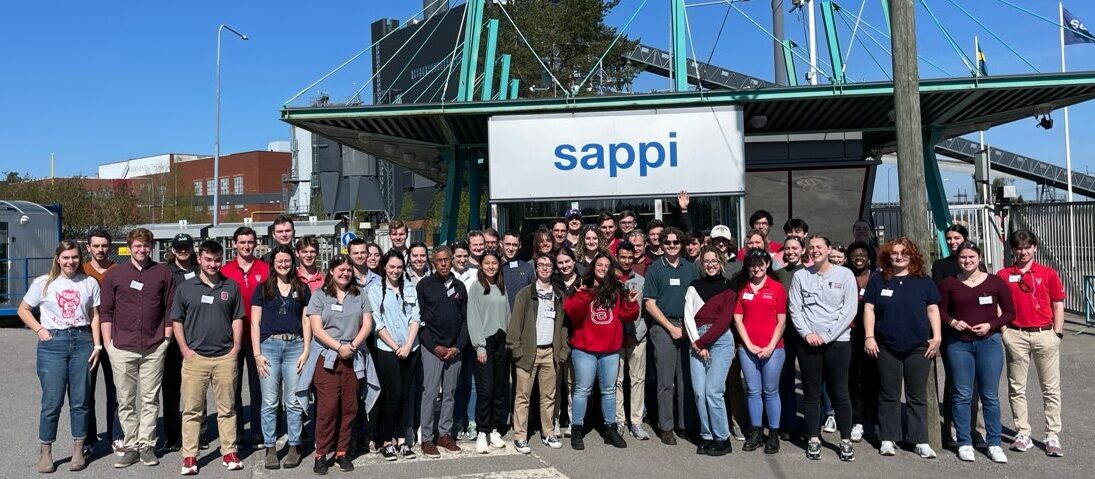Day 3 – Sappi Kirkniemi Mill

Day 3 – by Lucy Huitt, Hannah Getsee, Ian Seidel, and Trae Knight
Our third morning in Finland started later than the previous, as we departed for the Sappi Kirkniemi Mill around 10 o’clock. Despite some overslept alarms, we made decent time to Lohja and took some group photos outside the facility. When we entered the mill, we split into two groups. One group viewed a presentation from the site manager (Jari Nikkinen) while the other experienced a guided tour of the machines, coaters, and mechanical pulpers. Eventually, these groups switched places so that everyone could share the same experience.
Over the next few hours, we learned about the sustained success and continual reinvestment into the Kirkniemi Mill. Sitting on Lake Lohjanjärvi in southern Finland, the 57-year-old mill employs roughly 500 employees and has an annual capacity of 750,000 tons. It is currently the largest producer of coated publication paper in the world, and even with Sappi’s shift towards specialty and packaging grades, the site had a 600 million € turnover in 2021. The Kirkniemi Mill creates high-quality, glossy papers for companies such as Vogue and Time Magazine. The furnish consists heavily of mechanical pulp (made from local spruce/softwood) and is complimented by small amounts of externally-purchased chemical pulp and fillers/coatings. The most popular grades fall under the Galerie line, which includes Bulk, Fine, and Brite Plus.
The technology utilized at the Kirkniemi Mill was extremely impressive. During the tour, we saw all three paper machines- namely PM3. One of the newest machines installed in Europe, PM3 runs at a speed of 1600 m/min and has a total length around 100 m. It features a modified shoe press and a rapid off-line coater, which uses film and blade coating methods. In addition to other cool machinery (like calendering units and large refining disks), we saw exceptional cleanliness and mill organization. While much of the operation was familiar, it was interesting to observe a groundwood pulping process (which is extremely rare in the United States).
Our visit to the Sappi Kirkniemi Mill was fantastic. We learned about differences in energy consumption, environmentalism, and mill culture between Finland and the US. Although there is much more that can be said (such as the installation of a solid fuel boiler and subsequent carbon footprint decrease of 90%, or the operation of all water treatment processes from a single control room), we were amazed by Sappi’s commitment to quality and sustainability. One of our personal favorite features was the tricycle-scooters that the operators got to ride around the facility!
After the tours wrapped up, we began our journey to Jyväskylä for the second leg of the trip. We were pretty hungry, but at least the mill visit was fulfilling!
- Categories: